| Photojournal
- 16 July
2004
The
evening at Como Lake
| So, on Friday
the 16th, having already spent the whole morning out at Maplewood
taking photos, I decide to stop by Como Lake on my way home.
Como Lake really isn't
on my way home, but stopping there only adds a couple of km to
my journey. And sometimes there's interesting stuff happening
at Como Lake. It's got a little bit of wetlands habitat, and an
interesting mix of trees; it's mostly open parkland but there
is a little bit of brushy area, too.
I park at the south
end of the park, which is a little unusual, as I generally park
at the north end. Going towards the lake, I see that there are
the usual Canada Geese and Mallards around. The resident young
Muscovy Duck is also there, as is the Barnyard Goose. The late
is sparkling in the sunlight, with little bits of fluff from the
cottonwood trees floating around on it.
I look out on the lake
and see a small head out there, and I think that it's probably
a young Mallard. It's a little late for young Mallards, but I
know some ducks have late clutches.
I pointed my binoculars
at the young duck and was quite surprised to find that it wasn't
a duck at all. It was a Pied-billed Grebe. He's about half the
length of a Mallard, and sometimes looks to be more head than
body.
|
|
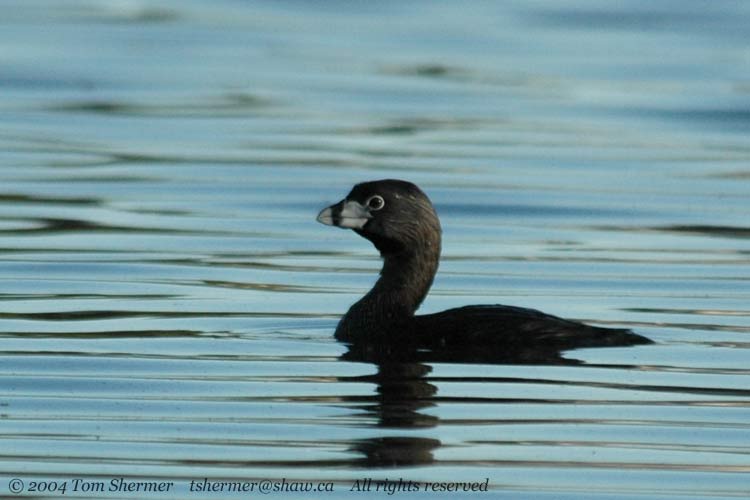 |
| Looking
more closely, I see that some of the little pieces of fluff on the
lake are being very unflufflike. They're swimming around. They're
small birds, about half the size of the grebe. It dawns on me that
they're young grebes. Cool!
Now, the young'uns
are far out on the lake and I have no chance of getting a decent
picture of them. So I try to anticipate where they're headed,
and go to that part of the lake.
When I get there, they're
swimming the other way, to the other side. So I walk around to
the other side.
And find the little
grebes out on the center of the lake swimming the other way. I'm
getting tired, and snap off a few photos of them at long range,
and decide to check what else the park is offering today.
Stopping near the marsh
area, I see a young House Sparrow sitting on a fence. I'm not
surprised that there are juvenile House Sparrows here; I've seen
the adults here all spring and summer.
|
|
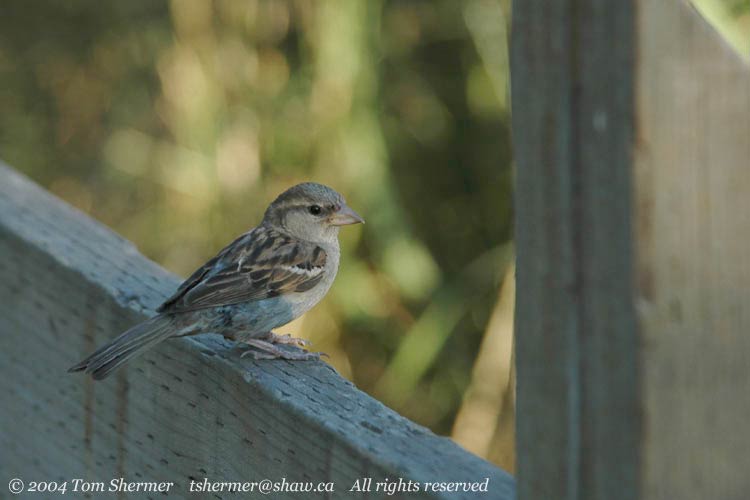 |
|
Also by the marsh there are a bunch of dragonflies in competition
for the skies. I spend some time tracking them and trying to get
photos of them, with little luck. Finally I catch one sitting
on a branch.
|
|
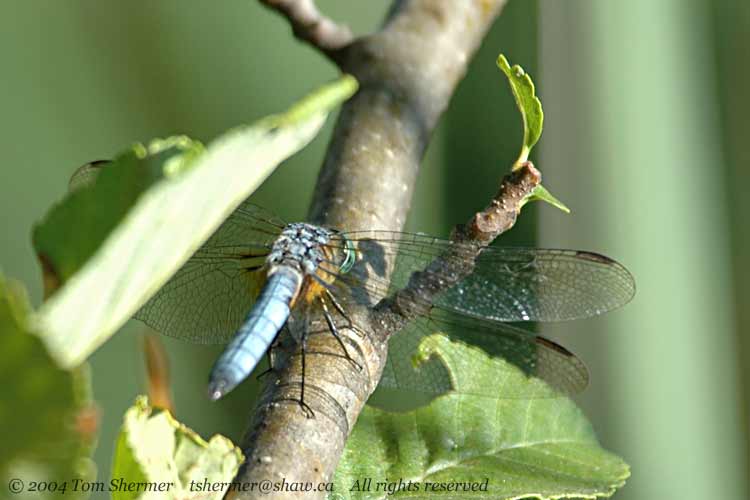 |
|
I don't know his name
(haven't gotten my books yet). His body looks like that of the
White tail, but his wings are different. The green eyes and orange
body are different, too.
There was also a dragonfly
that looked like a black-and-white version of a Twelve-spot Skimmer,
but it never lit and I wasn't able to catch it in flight.
So after a mainly fruitless
30-45 minutes chasing dragonflies, I look out and notice that
the little Pied-billed Grebes seem to be moderately close to the
opposite shore. I head over, and for once they haven't run away
yet. I sit down on the bank and start watching them and taking
photos.
Apparently, the adult
was feeding the young. The adult would go off and dive, almost
invariably surfacing with a fish in its mouth. It would then swim
over to the young.
|
|
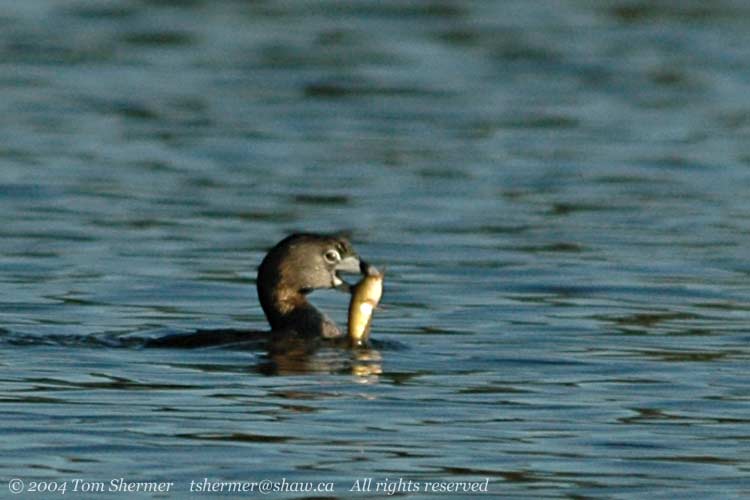 |
|
The young would just
be paddling around the surface while this was going on, or maybe
doing short (one- to three-second) dives. Young grebes can swim
and dive from birth.
Once the adult reached
the young, it would give the fish to one of them.
|
|
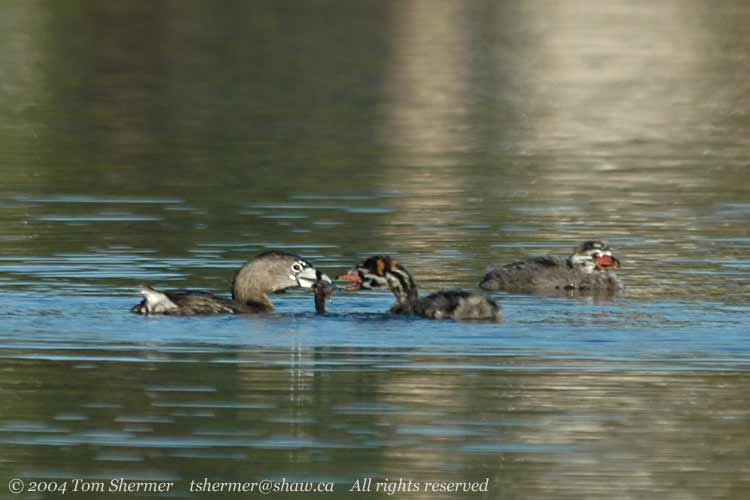 |
|
The young were quite
colorful; more colorful than the illustration of young Pied-billed
Grebes in my guide book.
Once the child had
the fish, it would maneuver it in its bill until it was lined
up with the long direction of the fish pointing the directly away
from the bird. This could take some doing, as the young were small
and the fish seemed sorta big for them.
|
|
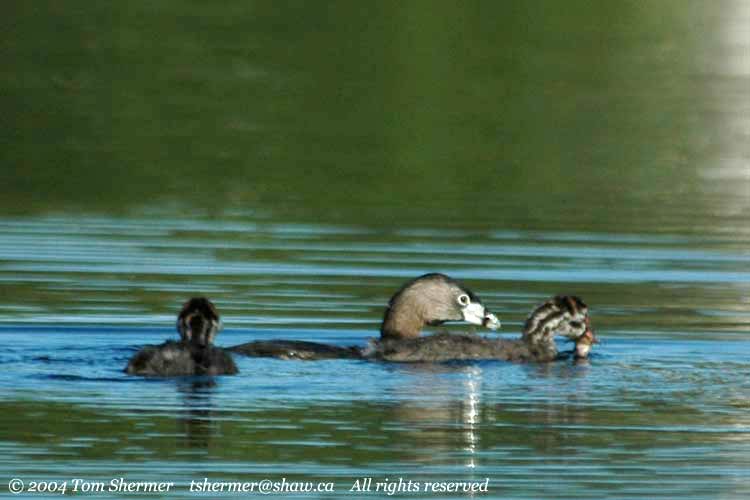 |
| The parent
would watch closely during all this preparation.
Once the fish was in
line with the grebe, he would suck up as much of it into his mouth
as he could, and try to lift his head a little.
|
|
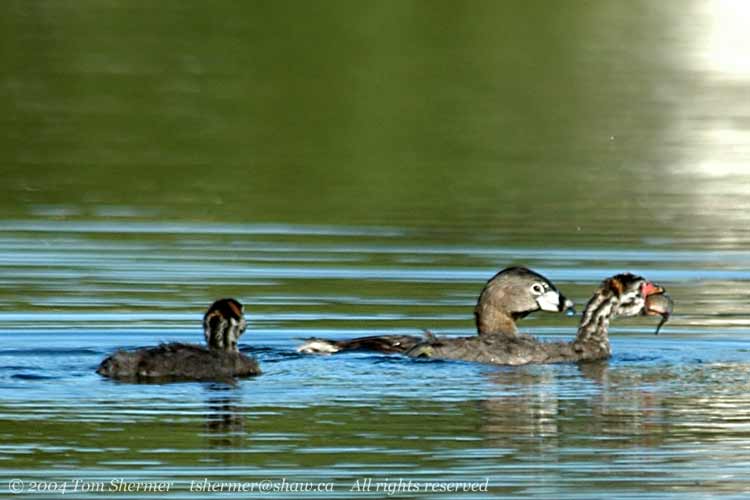 |
|
Next, he would toss
his head back, trying to straighten out his head and neck, and
to swallow the fish whole.
|
|
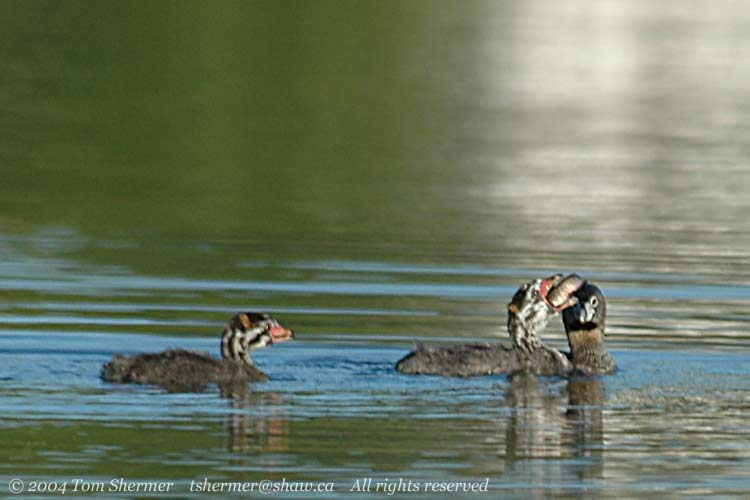 |
|
It's a good thing the
parent was supervising this, because six times out of seven, the
grebeling failed and spit the fish back out again.
|
|
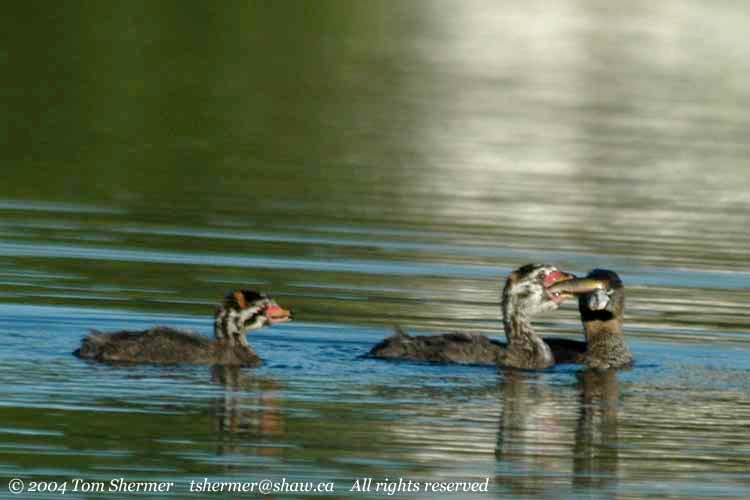 |
|
The adult would just
stick its head down and grab the fish as it floated (or tried
to swim?) away.
|
|
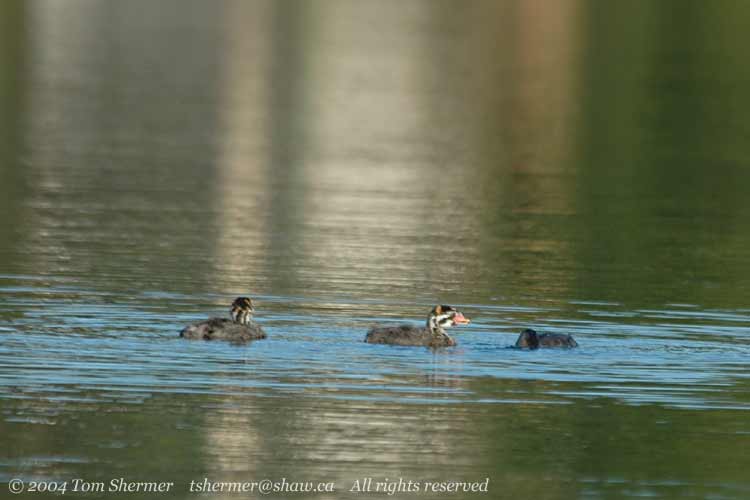 |
|
Then he'd return the
fish to Junior (or maybe to another Junior).
|
|
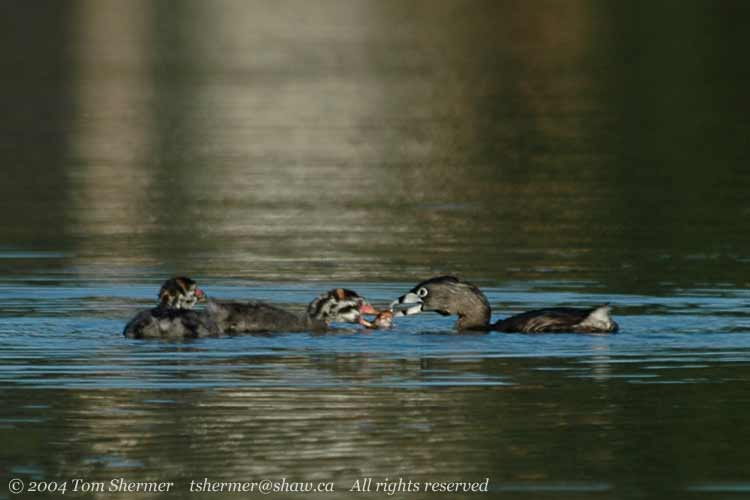 |
|
This was repeated as
often as necessary to have a grebeling swallow the fish. Here's
one that was successful. You can see his bulging, straightened
neck as the fish is going down.
|
|
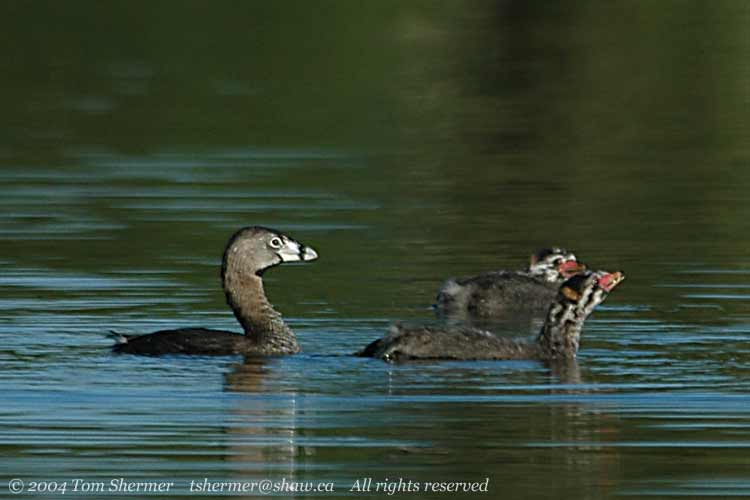 |
| I watched
the adult do this with about three fish before the light faded to
the point that I knew the photos wouldn't be any good. It had been
quite fun to watch this little bit of parenting in the wild. And
it was all taking place in a heavily-trafficked ordinary suburban
park...where most if not all of the other parkgoers were oblivious
to it.
Now that I've seen
young grebes in this lake, I'm going to be checking it next spring
for the courtship and mating displays of the adults. Grebes (in
general; I'm not sure about Pied-billed in particular) are known
for having some of the most intricate and interesting such displays
by birds.
Well, it had been a
great morning and a great evening for birds and photography...and
the weekend was just starting!
Your roving nature
reporter,
Tom
|
|
|